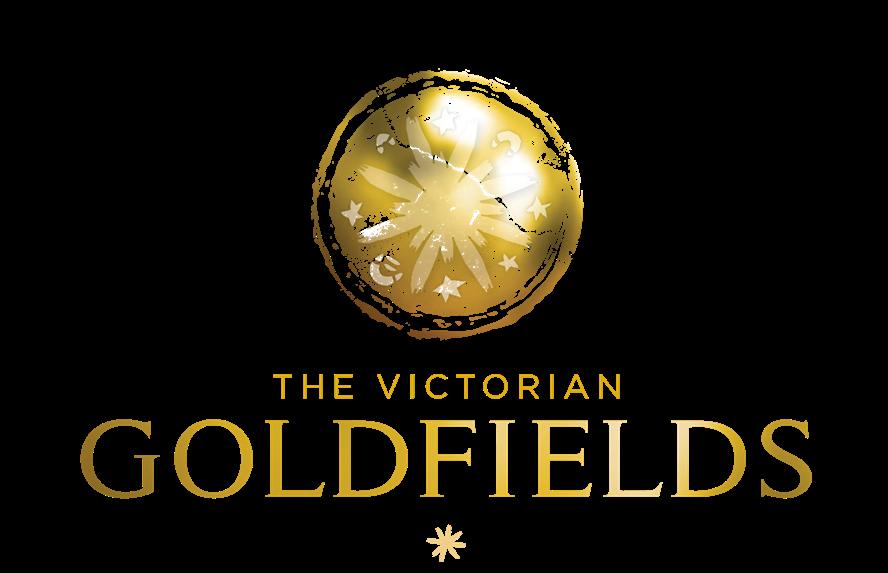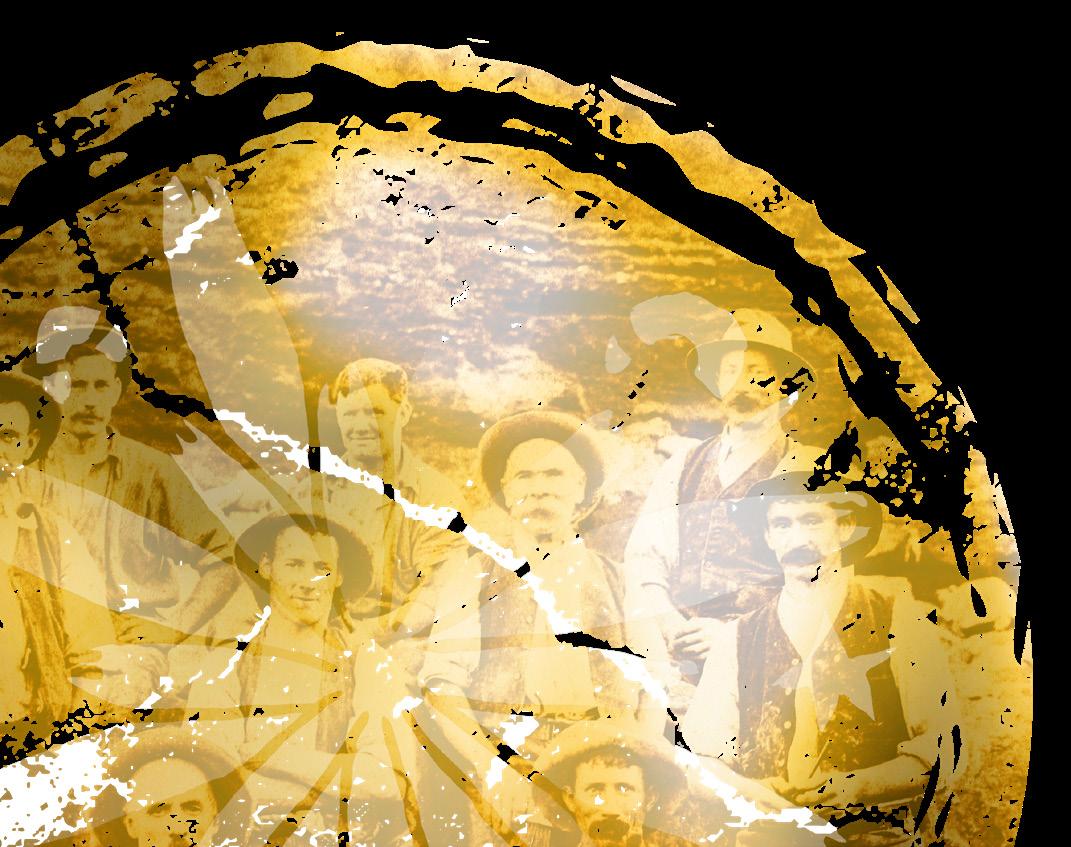
Extraordinary Landscapes of the Nineteenth Century Gold Rush Victoria, Australia
Extraordinary Landscapes of the nineteenth century Gold Rush



Extraordinary Landscapes of the Nineteenth Century Gold Rush Victoria, Australia
Extraordinary Landscapes of the nineteenth century Gold Rush


We acknowledge the Traditional Owners of Country also known today as the Victorian Goldfields.
We pay our respects to Elders past and present. We recognise your unbroken connection to Country and that your sovereignty has never been ceded.


The Victorian Goldfields represent the most extensive, coherent, and bestsurviving nineteenth century gold rush landscape anywhere in the world.

Gold is widely distributed across an extensive area of Victoria, the result of tectonic events hundreds of millions of years ago. Subsequent erosion revealed easily worked outcrops and alluvial deposits. Mining found the distinctive “deep leads” - buried ancient river channels of gold and the gold veins in the deep quartz rocks.
The Victorian Goldfields represent one of the most significant gold rushes in world history. Beginning in 1851, it was part of a broader era of overlapping gold rushes that led to profound global consequences in terms of mass migration economic and social upheaval.



The losses, dispossessions and displacement of Traditional Owners started with the arrival of Europeans. Colonial processes were accelerated in speed and scale because of the gold rush. The Aboriginal peoples called it “Upside-down Country.” However, their skills and deep knowledge of Country were vital to the migrant gold-seekers. Their continuing cultural custodianship of this area is a key part of managing the landscapes today.

63,000 BCE
Earliest evidence of Aboriginal people in Australia
40,000 BCE
Mungo Lady, Australia - oldest known human remains found anywhere in Australia.
10,000 BCE End of last Ice Age
3,300 BCE Otzi (Ice Man) mummy
3,000 BCE
Mesopotamian Cuneiform
2,500 BCE
Great Pyramid, Egypt

Chinese sluice-mining in creek bed, Ovens valley, nineteenth century
Over 350,000 people from Great Britain, China, Europe, the Americas, and the Pacific Islands flocked to the Victorian Goldfields, including many women and children. This diverse immigrant population rapidly established new settlements and communities. Most stayed and formed today’s mosaic of towns, cities and rural settlements across the region.


Above: Bush scene, three women panning for gold [location unknown] c.1855-1910 State Library Victoria, H81.239
are part of the oldest living

Top: Zealous gold diggers, Castlemaine Caption for image: Zealous gold diggers, Castlemaine 1852 S.T.G. [1872] Gill, S. T., 1818-1880 artist, State Library Victoria, H141536
1848 ACE
Gold Rush
1851 ACE
Victorian Gold Rush
1896 ACE

‘Washing out a good prospect’ ca.1858 (detail) State Library of Victoria, H84.167/34

The Victorian Goldfields showcase the evolution of mining techniques, from small-scale alluvial "diggings" to deep shaft mining - a remarkable engineering achievement, with the deepest gold mines in the southern hemisphere at the time.


The gold rush towns of Bendigo and Ballarat exemplify the rapid transformation of the landscape into architecturally distinguished cities. They represent outstanding examples of nineteenth century colonial urban planning that demonstrate the flow of wealth into the region, through the construction of banks with their own smelters, grand town halls and opulent theatres.






The Victorian Goldfields cultural landscape is a highly significant and remarkably intact representation of the global nineteenth century gold rush phenomenon, with exceptional technological, social, and environmental attributes that merit consideration for World Heritage inscription.


The Victorian Goldfields World Heritage Master Plan is designed to encourage deeper, more meaningful engagement with the region’s culture, heritage and environments. It ensures that the benefits of the bid are shared equitably with people and communities from across the 15 local government areas and encourages visitation to sites big and small across the region. It reflects the UN’s Sustainable Development Goals, UNESCO’s Historic Urban Landscape approach, and the World Heritage Journeys and World Heritage Sustainable Tourism Programmes with the aim of creating Australia’s first World Heritage Journeys destination.





“Ethical hoodie laboris aute consequat labore authentic tofu. Four dollar toast neutra coldpressed pok pok meh gastropub chambray pariatur sed. Succulents twee quis veniam, beard humblebrag”
Minister name
- Minister, Australian Government


“Ethical hoodie laboris aute consequat labore authentic tofu. Four dollar toast neutra coldpressed pok pok meh gastropub chambray pariatur sed. Succulents twee quis veniam, beard humblebrag”
Minister name
- Minister, Victorian Government (tbc)

“The bid provides an opportunity to have the region’s Traditional Owners ‘put back into the landscape in a respectful way’, to tell who they are and who we all want to be going forward –choosing how we tell this story, together.”
- Rodney Carter, CEO DJAARA (tbc)

Fifteen local governments, supported by the Victorian and Australian governments, and Traditional Owners have partnered to develop the World Heritage nomination. They aim to share the extraordinary story of the Victorian Goldfields with people from across the globe and create social, cultural and economic opportunities for every community across the region.













– Barry Gamble, Chief Advisor



